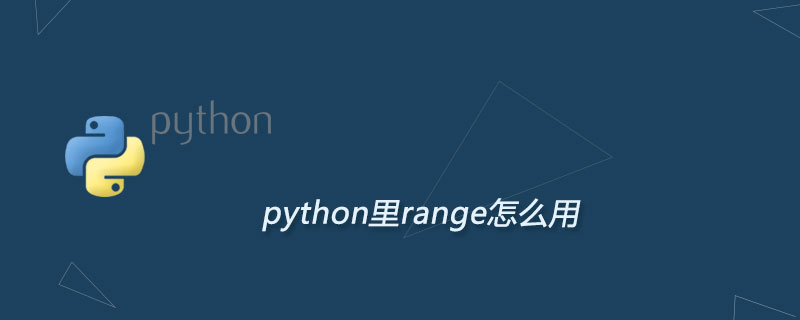Home > Article > Backend Development > How to use range in python

Python3 range() function returns an iterable object (type is object), not a list type, so the list will not be printed when printing.
Python3 list() function is an object iterator, which can convert the iterable object returned by range() into a list, and the returned variable type is a list.
Python2 range() function returns a list.
Function syntax
range(stop) range(start, stop[, step])
Parameter description:
start: Counting starts from start. The default is to start from 0. For example, range(5) is equivalent to range(0, 5);
stop: counts to the end of stop, but does not include stop. For example: range (0, 5) is [0, 1, 2, 3, 4] without 5
step: step size, default is 1. For example: range(0, 5) is equivalent to range(0, 5, 1)
Instance
>>>range(5) range(0, 5) >>> for i in range(5): ... print(i) ... 0 1 2 3 4 >>> list(range(5)) [0, 1, 2, 3, 4] >>> list(range(0)) [] >>>
has two parameters or three parameters (the second construction method) ::
>>>list(range(0, 30, 5)) [0, 5, 10, 15, 20, 25] >>> list(range(0, 10, 2)) [0, 2, 4, 6, 8] >>> list(range(0, -10, -1)) [0, -1, -2, -3, -4, -5, -6, -7, -8, -9] >>> list(range(1, 0)) [] >>> >>>
The above is the detailed content of How to use range in python. For more information, please follow other related articles on the PHP Chinese website!